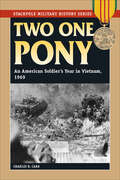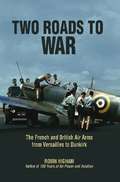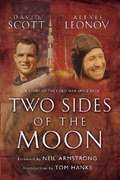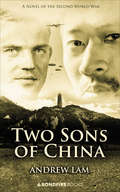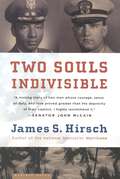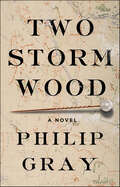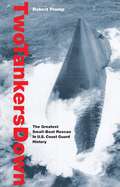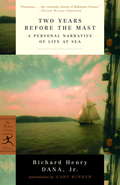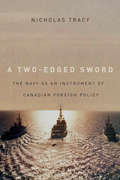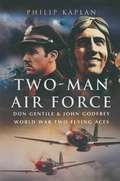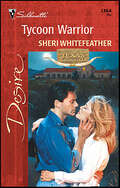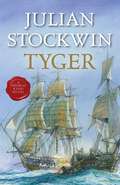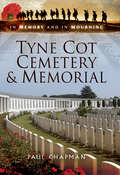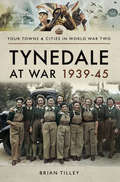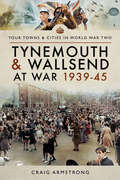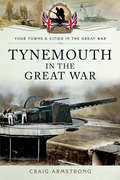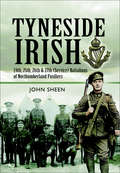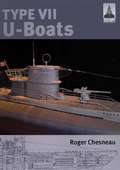- Table View
- List View
Two Novels of the Revolutionary War: Rise to Rebellion and The Glorious Cause
by Jeff ShaaraFrom Jeff Shaara, the modern master of military fiction, whose father reinvented the war novel with his Pulitzer Prize-winning classic The Killer Angels, comes an exclusive eBook edition collecting two stirring novels of the American Revolution: Rise to Rebellion and The Glorious Cause. RISE TO REBELLION "Gripping human drama."--Baltimore Sun Rise to Rebellion brilliantly brings to life the early days of the American Revolution, creating an unforgettable saga of the men who helped to forge the destiny of a nation--from idealistic attorney John Adams to audacious inventor and philosopher Benjamin Franklin. Shaara's most impressive achievement reveals how philosophers became fighters, how ideas became their ammunition, and how a scattered group of colonies became the United States of America. THE GLORIOUS CAUSE "Vivid and compelling . . . Shaara reaches new heights here, with a narrative that's impossible to put down."--Publishers Weekly (starred review) The Glorious Cause brings the saga of victory and defeat full circle, from the stunning victory at Trenton to the British surrender at Yorktown--a moment that changed the history of the world. This dramatic concluding volume is a tribute to the amazing people who turned ideas into action and fought to declare themselves free.
Two One Pony: An American Soldier's Year in Vietnam, 1969 (Stackpole Military History Series)
by Charles R CarrA thoughtful, reflective narrative of a reluctant soldier that captures the rhythms of life in war as well as the boredom and chaos of Vietnam. At the height of the Vietnam War, Charles Carr left graduate school to serve in the army in Southeast Asia, knowing that if he didn&’t, another man would go—and possibly die—in his place. He was assigned to the 2nd Battalion of the 47th Infantry (Mechanized) in the northern Mekong Delta for a tour of forcing himself through rice paddies and jungles all day and then setting ambushes at night. He concluded his tour with a stint at battalion headquarters. More than just a war memoir, this is the story of one soldier trying to find his way in uncertain times—and to survive his year in Vietnam.
Two Roads to War
by Robin HighamTwo Roads to 1940 is a comparative study of the French and British air arms, from 1918 to 10 May 1940. Higham seeks the answer to the question "Why was the Armée de l'Air defeated in June 1940 whereas the Royal Air Force won the Battle Over Britain in September?"To reach a conclusion, the structure, the men and matériel, the government, and the economic infrastructure were analyzed. The story reveals that the French, dominated by the Armée de l'Terre, was hypnotized by "1918"; in contrast, the independent RAF evolved in the interwar years into a sophisticated, scientifically based force, which got the Air Defence of Great Britain (1924-1936) ready, was supported by government practices and consistency, as well as the necessary technical support for Fighter Command (1936-). Thus in 1940 the RAF could meet the Luftwaffe challenge.But the RAF also suffered from three major errors; no Air Officer Commander-in-Chief to control all the air commands, the almost fatal miscalculations of the power of Bomber Command, and the Army Ordnance's refusal to develop the .50-caliber machine-gun instead of the .303.Serious historians and buffs should find the story salutary, as well as a detailed explanation of why air forces fail
Two Sides of the Moon: Our Story of the Cold War Space Race
by David Scott Neil Armstrong Christine Toomey Tom Hanks Alexei LeonovSpace was one of the most fiercely fought battlegrounds of the Cold War, the Moon its ultimate beachhead. In this dual autobiography,Apollo 15 commander David Scott and cosmonaut Alexei Leonov, the first man to ever walk in space, recount their exceptional lives and careers spent on the cutting edge of science and space exploration—and their participation in the greatest technological race ever—to land a man on the Moon. With each mission fraught with perilous tasks, and each space program touched by tragedy, these parallel tales of adventure and heroism read like a modern-day thriller. Cutting fast between their differing recollections, this book reveals, in a very personal way, the drama of one of the most ambitious contests ever embarked on by man, set against the conflict that once held the world in suspense: the clash between Communism and Western democracy. Through the men's memoirs, their courage, passion for exploration, and determination to push themselves to the limit, emerge not only through their triumphs but also through their perseverance in times of extraordinary difficulty and danger. "Two Sides of the Moon is unique among space histories. If you are looking for a balanced, interesting, and personal account of the American and Soviet space programs during the 1960s and 1970s this is it. " ---Astronomy Magazine
Two Soldiers, Two Lost Fronts: German War Diaries of the Stalingrad and North Africa Campaigns
by Don A Gregory Wilhelm R GehlenTwo war diaries that reveal &“just what it was like, day by day, living in a Wehrmacht unit&” (Internet Modeler). This book is built around two recently discovered war diaries—one by a member of the 23rd Panzer Division, which served under Manstein in Russia, and the other by a member of Rommel&’s Afrika Korps. Together, along with detailed timelines and brief overviews, they comprise a fascinating up-close look at the German side of World War II. The stories are told primarily in the first person present tense, as events occurred, and without the benefit—or liability—of postwar reflection. The first diary, author unknown, covers April 1942 to March 1943, the momentous year when the tide of battle turned in the East. It first details the unit&’s combat in the great German victory at Kharkov, then the advance to the Caucasus, and finally the lethal winter of 1942–43. The second diary&’s author was a soldier named Rolf Krengel, and the diary was the original, handwritten copy. It starts with the beginning of the war and ends shortly after the occupation. Serving primarily in North Africa, Krengel recounts with keen insight and flashes of humor the day-to-day challenges of the Afrika Korps. During one of the swirling battles in the desert, Krengel found himself sharing a tent with Rommel at a forward outpost. Neither of the diarists was famous, nor of especially high rank. These are simply the brutally honest accounts written at the time by men of the Wehrmacht who participated in two of history&’s most crucial campaigns.
Two Sons of China: A Novel of the Second World War
by Andrew Lam&“Compelling . . . Gritty in its historical detail . . . An eye-opening novel about a little known story at the far side of World War II&” (Anita Shreve, New York Times–bestselling author of The Pilot&’s Wife). Inspired by true events, Two Sons of China is a sweeping historical saga from a forgotten theater of World War II, an action-packed tale about an unlikely friendship between two soldiers—one American, the other, Communist Chinese—and the powerful forces that threaten to tear them apart. In 1944, American troops have arrived in China to help fight the Japanese. Lt. David Parker loathes his assignment to isolated Chungking. The war there is stalled because Chiang Kai-shek&’s Nationalist government is corrupt and unwilling to fight. So when Parker hears of a special American mission venturing north to assist Mao Zedong&’s Communist forces, he is desperate to join them. Rumors have spread that the Communists are fighting the Japanese with heroic zeal. Lin Yuen, a reclusive and skilled Communist guerilla leader, can scarcely hide his annoyance when Lieutenant Parker is assigned to join his next dangerous mission behind enemy lines. Both men have deeply held, clashing convictions, but the battles they fight, the horrors they witness, and the brotherhood they forge ultimately transform them both. As the end of World War II forces America to take sides in an impending Nationalist-Communist civil war, Parker and Yuen find their loyalties tested. Together, they must confront a final trial—one that imperils the honor they cherish and the people they love. &“Two Sons of China takes you to WWII China, introduces you to a fascinating cast of characters, and spins a terrific tale of adventure and romance. If you love historical fiction, or any fiction, don&’t miss it. A superb debut.&” —William Martin, New York Times–bestselling author of Back Bay and The Lincoln Letter
Two Souls Indivisible
by James S. HirschHow two Vietnam POWs, one white and one black, formed an unexpected friendship that saved them both: “A moving story.”??—??John McCainFred Cherry was one of the few black pilots taken prisoner by the Vietnamese, tortured and intimidated by captors who tried and failed to get him to sign antiwar statements. Porter Halyburton was a white southern navy flier who the Vietnamese threw into a cell with Cherry at the famous Hanoi Hilton, hoping that close quarters would inspire racial tensions to boil over. Instead, they fostered an intense connection that would help both men survive the war??—??and continue for the rest of their lives. An unforgettable story of courage and friendship, Two Souls Indivisible is a compelling reminder of what can be achieved, in the face of incredible odds, when we put our differences aside. “A riveting tale . . . Two Souls Indivisible joins the small list of essential tomes on the war, race, and to an even larger degree, books that describe the true meaning of heroism.”??—??Seattle Times “A moving story of two men whose courage, sense of duty, and love proved greater than the depravity of their captors.”??—??Sen. John McCain
Two Storm Wood: A Novel
by Philip GrayThree months after the end of the Great War, a young woman sets out across the wastelands of the Western Front to learn the fate of the man she loved.On the desolate battlefields of northern France, the guns of the Great War are silent. Special battalions now face the dangerous task of gathering up the dead for mass burial.Captain Mackenzie is a survivor of the war, but still its prisoner. He cannot return home until his fallen comrades are recovered and laid to rest. His task is upended when a gruesome discovery is made beneath the ruins of a German strongpoint. Amy Vanneck’s fiancé is one soldier lost amongst many, but she cannot accept that his body may never be found. Defying convention, hardship, and impossible odds, she heads to France, determined to discover what became of the man she loved.It soon becomes clear that what Mackenzie has uncovered is a war crime of inhuman savagery. As the truth leaches out, both he and Amy are drawn into the hunt for a psychopath, one for whom the atrocity at Two Storm Wood is not an end, but a beginning.
Two Tankers Down: The Greatest Small-Boat Rescue in U. S. Coast Guard History
by Robert FrumpThis is the suspenseful true story of a U.S. Coast Guard captain and his small crew who were called out to rescue the tanker crews without a cutter or chopper or a sea plane.
Two Years Before The Mast: A Personal Narrative of Life at Sea
by Richard Henry Dana Jr.Tracing an awe-inspiring oceanic route from Boston, around Cape Horn, to the California coast, Two Years Before the Mast is both a riveting story of adventure and the most eloquent, insightful account we have of life at sea in the early nineteenth century. Richard Henry Dana is only nineteen when he abandons the patrician world of Boston and Harvard for an arduous voyage among real sailors, amid genuine danger. The result is an astonishing read, replete with vivid descriptions of storms, whales, and the ship's mad captain, terrible hardship and magical beauty, and fascinating historical detail, including an intriguing portrait of California before the gold rush. As D. H. Lawrence proclaimed, "Dana's small book is a very great book. "
Two Years Below the Horn: Operation Tabarin, Field Science, and Antarctic Sovereignty, 1944-1946
by Andrew Taylor Daniel Heidt Whitney LackenbauerIn "Two Years Below the Horn," engineer Andrew Taylor vividly recounts his experiences and accomplishments during Operation Tabarin, a landmark British expedition to Antarctica to establish sovereignty and conduct science during the Second World War. When mental strain led the operation’s first commander to resign, Taylor—a military engineer with extensive prewar surveying experience—became the first and only Canadian to lead an Antarctic expedition. As commander of the operation, Taylor oversaw construction of the first permanent base on the Antarctic continent at Hope Bay. From there, he led four-man teams on two epic sledging journeys around James Ross Island,overcoming arduous conditions and correcting cartographic mistakes made by previous explorers. The editors’ detailed afterword draws on Taylor’s extensive personal papers to highlight Taylor’s achievements and document his significant contributions to polar science. This book will appeal to readers interested in the history of polar exploration, science, and sovereignty. It also sheds light on the little known contribution of a Canadian to a distant theatre of the Second World War. The wartime service of Major Taylor reveals important new details about a groundbreaking operation that laid the foundation for the British Antarctic Survey and marked a critical moment in the transition from the heroic to the modern scientific era in polar exploration.
Two-Edged Sword
by Nicholas TracyIn the first major study of the Royal Canadian Navy's contribution to foreign policy, Nicholas Tracy takes a comprehensive look at the paradox that Canada faces in participating in a system of collective defence as a means of avoiding subordination to other countries. Created in 1910 to support Canadian autonomy, the Royal Canadian Navy has played an important role in defining Canada's relationship with the United Kingdom, the United States, and NATO. Initially involved with participation in Imperial and Commonwealth defence, the RCN's role shifted following the Second World War to primarily ensuring the survival of the NATO alliance and deflecting American influence over Canada. Tracy demonstrates the ways in which the Navy's priorities have realigned since the end of the Cold War, this time partnering with the US and NATO navies in global policing. Insightful, detailed, and grounded in solid historical scholarship, A Two-Edged Sword presents a complete portrait of the shifting relevance and future of a cornerstone of Canadian defence.
Two-Edged Sword: The Navy as an Instrument of Canadian Foreign Policy (Carleton Library Series #225)
by Nicholas TracyIn the first major study of the Royal Canadian Navy's contribution to foreign policy, Nicholas Tracy takes a comprehensive look at the paradox that Canada faces in participating in a system of collective defence as a means of avoiding subordination to other countries. Created in 1910 to support Canadian autonomy, the Royal Canadian Navy has played an important role in defining Canada's relationship with the United Kingdom, the United States, and NATO. Initially involved with participation in Imperial and Commonwealth defence, the RCN's role shifted following the Second World War to primarily ensuring the survival of the NATO alliance and deflecting American influence over Canada. Tracy demonstrates the ways in which the Navy's priorities have realigned since the end of the Cold War, this time partnering with the US and NATO navies in global policing. Insightful, detailed, and grounded in solid historical scholarship, A Two-Edged Sword presents a complete portrait of the shifting relevance and future of a cornerstone of Canadian defence.
Two-Man Air Force: Don Gentile & John Godfrey World War Two Flying Aces
by Philip KaplanAmerican volunteers Don Gentile (pronounced Jen-tilly) and John Godfrey flew together as leader and wingman respectively, with the USAAF 4th Fighter Group based at Debden near Cambridge in England. At the end of their missions with the 4th the two of them had accounted for over 58 enemy aircraft destroyed. Major Gentile had scored 22 air and 6 ground kills before he was returned to the USA to help raise money for the war effort. Major Godfrey was credited with 18 air and 12 ground kills before he was shot down and taken prisoner of war. This is the story of their amazing adventures and wartime partnership from their basic training in Canada and then onto England where they first flew the Supermarine Spitfire. It continues with their transfer to the USAAF 4th Fighter Group when the US entered the war and when the two were retrained to fly the P-47 Thunderbolt and eventually the superb P-51 Mustang. These two ace pilots loved life as much as flying - and as well as being hell-bent on destroying the enemy in the skies of Europe they also lived life to the full in their off-duty time in England.
Tycoon Warrior (Texas Cattleman's Club)
by Sheri WhiteFeatherDakota Lewis wanted only one thing—his wife! By law, Kathy Lewis was still married to him, but she was not under his roof…in his bed. This bold modern Native American warrior had faced many fights, but confronting the painful truth of why she’d walked out might be an even tougher ordeal. Bitterly regretting that he hadn’t been there when his Kathy needed him most, Dakota was now fully determined never to leave her side again….
Tyger
by Julian StockwinThe 16th volume in the popular high-seas nautical adventure series featuring naval hero Thomas Kydd. The greatest naval trial in the Georgian period is underway at Portsmouth with the court-martial of Sir Home Popham, Captain Sir Thomas Kydd&’s commanding officer in the doomed occupation of Buenos Aires. Kydd has sympathy for Popham&’s unauthorized action but his support for his former commander leaves him athwart some very influential people in the Admiralty.With his frigate L'Aurore unfit for sea, Kydd is given a new commission that his rivals hope will destroy his career. The Tyger's have recently mutinied, but instead of dispersing her company around the fleet as is customary, the ship is pressed into immediate service in the North Sea and Kydd faces a crew still under some malign influence. Enemies aboard and on the high seas are just the start of the problem. Soon he will have to take his untested and untrustworthy crew into the Baltic, where they will find themselves entangled with Napoleon&’s invasion of Prussia. The stakes are desperate, the task seemingly impossible, and the French implacable. The only way for Kydd to avoid disgrace is to gamble his reputation and crew on a crazy mission to snatch a Prussian division out of the jaws of Napoleon&’s advancing army. Will he return home once more a hero or face a court-martial himself?
Tyll: A Novel
by Daniel KehlmannFrom the internationally best-selling author of You Should Have Left, Measuring the World, and F, a transfixing retelling of the German myth of Tyll Ulenspiegel: a story about the devastation of war and a beguiling artist&’s decision never to die Daniel Kehlmann masterfully weaves the fates of many historical figures into this enchanting work of magical realism and adventure. This account of the seventeenth-century vagabond performer and trickster Tyll Ulenspiegel begins when he&’s a scrawny boy growing up in a quiet village. When his father, a miller with a secret interest in alchemy and magic, is found out by the church, Tyll is forced to flee with the baker&’s daughter, Nele. They find safety and companionship with a traveling performer, who teaches Tyll his trade. And so begins a journey of discovery and performance for Tyll, as he travels through a continent devastated by the Thirty Years&’ War and encounters along the way a hangman, a fraudulent Jesuit scholar, and the exiled King Frederick and Queen Elizabeth of Bohemia. Tyll displays Kehlmann&’s remarkable narrative gifts and confirms the power of art in the face of the senseless brutality of history.Translated from the German by Ross Benjamin
Tyne Cot Cemetery & Memorial: In Memory and In Mourning (In Memory and in Mourning)
by Paul ChapmanThis is a comprehensive and highly emotive volume, borne of years of intensive research and many trips to the battlefields of the Great War. It seeks to humanise Tyne Cot cemetery, to offer the reader a chance to engage with the personal stories of the soldiers whose names have been chiseled there in stone. Poignant stories of camaraderie, tragic twists of fate and noble sacrifice have been collated in an attempt to bring home the reality of war and the true extent of its tragic cost. It is hoped that visitors to the battlefields, whether their relatives are listed within or not, will find their experience enriched by having access to this treasure trove of stories.
Tynedale at War, 1939–1945 (Your Towns & Cities in World War Two)
by Brian TilleyBarawling Australians, Polish pilots burning to avenge themselves on Germany for the invasion of their country, the German officer who drowned while trying to escape from a South Tyne PoW camp, and the pub landlady who watered down her gin in order, she claimed, to prevent naive Land Army girls getting drunk it was all part of life in Tynedale as the district went to war for the second time in twenty-five years.Although well away from the battlegrounds of Europe, Tynedale did not escape the ravages of the Second World War. The rolling moorlands of the heart of Northumberland are still pitted with dozens of craters, where both Allied and Axis aircraft crashed in flames, and there were tragedies on the Home Front too.At remote Coanwood, twenty-four men were left dead or seriously injured when a training exercise went badly wrong, and an exploding ammunition train at Hexham railway station left three men dead. Even before the conflict began, founder of the British Union of Fascists Sir Oswald Mosley and the hated Nazi propaganda broadcaster, William Joyce better known as Lord Haw Haw both came to the heart of Northumberland to preach the Fascist gospel in Hexham.This book deals with the everyday impact of six years of war on the district, from the arrival of gravely wounded soldiers from Dunkirk at Hexham Emergency Hospital, through to dealing with thousands of often louse-ridden evacuees from industrial Tyneside, the heroics of local servicemen and the antics of the Home Guard.
Tynedale in the Great War (Your Towns & Cities in the Great War)
by Brian TilleyThe remote moors and valleys around Hexham in Northumberland have been producing fighting men for countless millennia. From repelling invading Romans and Vikings, to locking swords with William Wallaces rampaging Scots, and the lawless days of the Border Reivers, the men of Tynedale have always rallied to the cause. So when Kitcheners call went out in 1914, Tynedales farmers, estate workers, pitmen and the gentry flocked to the colours in their thousands.Pitched straight into the front line against battle-hardened German troops just a week after landing in France in 1915, the Tynedale-based Territorials, the 4th Battalion Northumberland Fusiliers, acquitted themselves so well they received a personal commendation from the Allied Commander in Chief, Sir John French. And what of those who were left behind to face the constant threat of the sinister Zeppelins, escaped German prisoners lurking in the heather and the outraged accusations of shirking and cowardice?Extensive and painstaking research into the impact of the conflict on Hexham and the wider Tynedale district, both on the front line and on the home front, has produced this fascinating and absorbing account of a district at war.Letters back home from the trenches, soldiers diaries and reports in the local press paint a vivid picture of what it was like to face the withering fire of German machine guns, the choking clouds of poisonous gas and to suffer the devastating loss of fathers, sons, husbands and sweethearts, as tales of unbelievable heroism and Northumbrian humour abound.
Tynemouth and Wallsend at War, 1939–45 (Your Towns & Cities in World War Two)
by Craig ArmstrongTynemouth and Wallsend were key communities in the national war effort despite their relatively small size. Located on the key East Coast they played a significant military and civil role in the war. Tynemouth was situated at the key entry to the strategically important River Tyne and was well defended against enemy attack with several forts and other measures in place. The scenic seaside town saw a large military buildup with several different army and naval units rotating through the area to man defenses and to train whilst the local Home Guard unit was voted one of the best in the country and was asked to give a radio broadcast on its methods (despite some comic accidents along the way).Wallsend, a largely urban industrial community, was home to key wartime industries with its shipbuilding yards (including Swan Hunters) building and repairing huge numbers of vessels, both naval and merchant, throughout the war. This made the town a significant target for the Luftwaffe and several determined raids were made which inflicted heavy casualties, especially during 1941.The area also hosted a large number of heavy and light industrial works which made significant contributions to the war effort. The fishermen of the North Shields fishing fleet also played a dangerous role during the war (many, including one of the authors grandfathers served in the Royal Naval Reserve) when supplying fresh fish, already a dangerous task, to a near-starving wartime population was made more dangerous through enemy action.The book also looks at the considerable contribution made by the men and women who volunteered for the ARP and Civil Defence Services. The heavy raids resulted in great loss of life, including the most deadly single attack outside of London when over 100 people were killed when a North Shields shelter took a direct hit in 1941, and the men and women of the emergency services were faced with horrifying scenes (the authors other grandfather was a regular fireman and ambulanceman who had a particularly lucky escape when his fire engine was blown into a shell crater during a raid) which they had to overcome and work through.No member of the community was left untouched by the war whether they were evacuees (the authors father was one of them), workers, servicemen or just civilians struggling to maintain a home in wartime Britain.
Tynemouth in the Great War (Your Towns & Cities in the Great War)
by Craig ArmstrongA history of the English seaside town during World War I, from its significance to its sacrifices.Tynemouth Borough, which included the towns of Tynemouth and North Shields, was an area of strategic value to the national war effort as it contained the mouth of the river Tyne and was the entry point to the most important munitions center in Britain. Industry upriver included the manufacture of munitions, armaments, and military and civilian ships, while the port of Tyne was one of the busiest in the country with its internationally important coal export industry.Away from its industrial importance, the area was also a hotbed of military recruitment. In common with the rest of the northeast, Tynemouth had large numbers of young men who were serving in the forces before the outbreak of the war. Its record for wartime recruitment was second to none and it lay in a key recruitment area for the local regiment, the Northumberland Fusiliers, who raised over fifty battalions during the war—a record. Given its location on the coast, Tynemouth also had a proud tradition of service in the Merchant Navy and many Tynemouth men had the sea in their blood, whilst North Shields was the home base of a large and active fishing fleet. Many of the men who manned the trawlers saw active service, whilst others were exposed to even greater dangers due to the war.This engaging book is the first to look at the fascinating social history of Tynemouth during the shattering years of the Great War and charts the huge sacrifices made by the townspeople.
Tyneside Irish: 24th, 25th, 26th and 27th (Service) Battalions of Northumberland Fusiliers
by John SheenThe Pals battalions were a phenomenon of the Great War, never repeated since. Under Lord Derbys scheme, and in response to Kitcheners famous call for a million volunteers, local communities raised (and initially often paid for) entire battalions for service on the Western Front. Their experience was all too frequently tragic, as men who had known each other all their lives, had worked, volunteered, and trained together, and had shipped to France together, encountered the first full fury of modern battle on the Somme in July 1916. Many of the Pals battalions would not long survive that first brutal baptism, but their spirit and fighting qualities have gone down into history - these were, truly, the cream of Britains young men, and every single one of them was a volunteer.This is a comprehensive history of the Tyneside Irish Brigade raised in the North East. It covers their raising, training and active service as well as the aftermath of the war and how it effected the local community. Included is an invaluable nominal roll which will appeal to local, family and military enthusiasts alike.
Tyneside Scottish: A History of the Tyneside Scottish Brigade Raised in the North East in World War One (Pals Ser.)
by John Sheen Graham StewartThe exploits of the twentieth, twenty-first, twenty-second, and twenty-third (Service) Battalions of the Northumberland Fusiliers during the Great War—&“Harder Than Hammers.&” Although called the Tyneside Scottish, very few of the men who made up this Brigade were of Scottish descent. Many came from local villages or were from the Northumberland pits. They saw action at the Battle of the Somme and after it were allowed to put tartan behind their cap badges because of their bravery. &“This remarkable product of much research includes lists of those who received gallantry awards and of officers and other ranks. It is an informative book which will be of great help to anyone researching the Tyneside Scottish during WWI and which will also act as a keepsake for those who have a particular interest in the regiments.&” —Northumberland & Durham Family History Society
Type VII U-Boats (Shipcraft Ser. #4)
by Roger ChesneauThe ShipCraft series provides in-depth information about building and modifying model kits of famous warship types. Lavishly illustrated, each book takes the modeller through a brief history of the subject class, highlighting differences between sister-ships and changes in their appearance over their careers. This includes paint schemes and camouflage, featuring colour profiles and highly-detailed line drawings and scale plans. The modelling section reviews the strengths and weaknesses of available kits, lists commercial accessory sets for super-detailing of the ships, and provides hints on modifying and improving the basic kit. This is followed by an extensive photographic gallery of selected high-quality models in a variety of scales, and the book concludes with a section on research references books, monographs, large-scale plans and websites.This volume is devoted to the largest class of submarines ever built, the Type VII, which formed the backbone of the German effort in the critical Battle of the Atlantic. A pre-war design, the Type VII was developed as the campaign progressed and was still in frontline service in 1945. All the major variants, as well as minor changes to equipment, are covered here. With its unparalleled level of visual information paint schemes, models, line drawings and photographs it is simply the best reference for any modelmaker setting out to build one of these famous boats.

